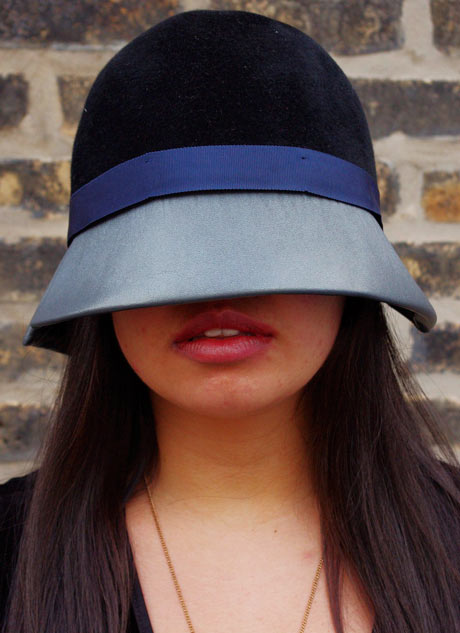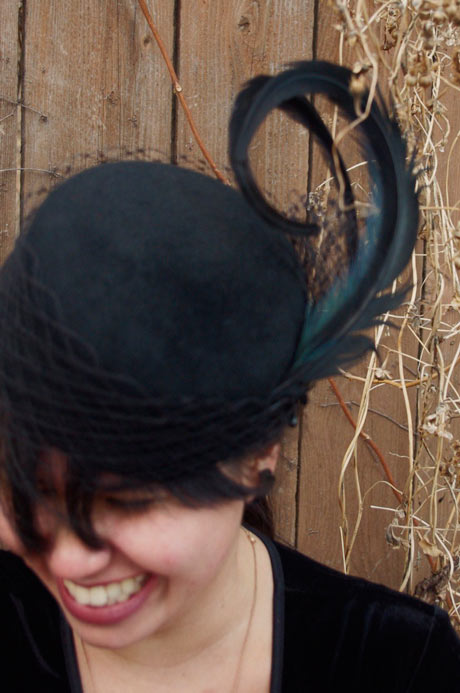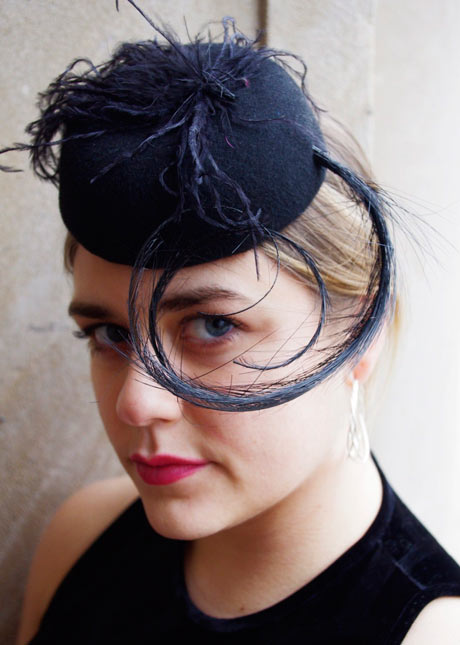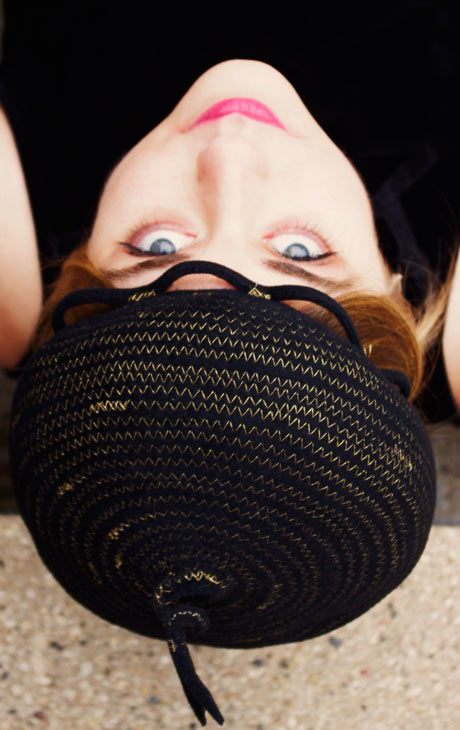The hat, in general, has not left the silhouette of the average American but what has been absent is the investment in the proper hat. Many of you may think that because of the excess of wind in the city, the thought of making an investment in a one-of-a-kind item would be ridiculous. Well, unless there is something wrong with your arms, you’re more than capable of donning and holding on to a decent chapeau.
I bring this up because of the recent spike in hat popularity. Chalk it up to the ad nauseum coverage of the upcoming royal wedding that looms over us (well, at least me). Future Mrs. Prince William Kate Middleton has brought the hat to the attention of myself and others. So has Mad Men, with its men clad in Cold War glory, drunken/smoky sophistication and incredible stetson fedoras.
Regardless of the decade or the season, there have been people who have held on to millinery even at the least fashionable of times. Native Chicagoan Eia Radosavljevic is one of them. She teaches at the School of the Art Institute and also makes hats. The prices are a bit steep, but I thought we just established that a good hat is priceless and timeless.

“It got to the point where I had to price my hat before I left in the morning because they rarely came home,” Radosavljevic says. “[People would] grab me on the street, checkbook out, which was great and it kind of forced me into what was going to come next.”

Radosavljevic was born and raised in Chicago and after spending some time away, “for personal and professional reasons,” she decided to come back, “thinking it was just like a three-month visit and that was, like, 16 years ago.” She began her teaching career when she was invited by the Art Institute to lecture the accessories class.
“[Since] there were no head-wear classes, it just started snowballing with one class a year, two classes a year,” she says. “Now we have five different courses a year, which is pretty amazing. I don’t know of many schools in the U.S. that have that many.”
I asked her if perhaps if the increase in popularity of mililner courses had something to do with Chicago specifically. Eia explained that she used to think so, but “[To] be kind of brutally honest about it, I think it’s more [the fact] that Chicago does have a lot of milliners per capita. New York is starting to band together and strengthen more, too.”
When it comes to the state of millinery education in the Urbs in Horto, she can attest to her pioneer status in the field. “Other schools have millinery courses, too, but I don’t think to the extent we have, as best I know.[…] I started out, not wanting to do this as a full-time thing and just wanted to teach my one class and keep busy with my business, but I just have wanted to see it grow more so I put the effort into creating all the courses and pushing.”

“Many of the elective faculty…are not the adjunct faculty, but I’ve pushed and become adjunct so I just put more effort into this route. I think—not too make myself sound like some kind of saint—but I think that a lot of milliners feel very competitive because the market is small. So rather than putting the energy into expanding the market, some of the energy is put in to ‘make sure I keep my clients’ and ‘make sure I keep my techniques to myself.’”
“I was lucky enough to have some teachers like Ann Albrizio, Janine Galimard at Fashion Institute of Technology who would just give you every secret they had learned at Balenciaga and I like doing that [with my students as well].” She also studied alongside Janet Linville at FIT, who’s now the head milliner at the Metropolitan Opera.
Radosavljevic doesn’t want to sound “pompous,” as she puts it, but there is no denying her trailblazing status since before her there were no millinery courses. Since she started teaching, Radosavljevic has inspired former students to carry the millinery torch including William Makela, who teaches at Columbia College, and Angela Morano, who just graduated from SAIC last year and teaches millinery for After School Matters.

So for heaven’s sake, put a lid on it and until next time:
Don’t be a stranger but do be stranger.
Hats by Eia Radosavljevic
Models: Alison Vargas and Laura Fredrickson-Morales
Photos by Lauren Cali